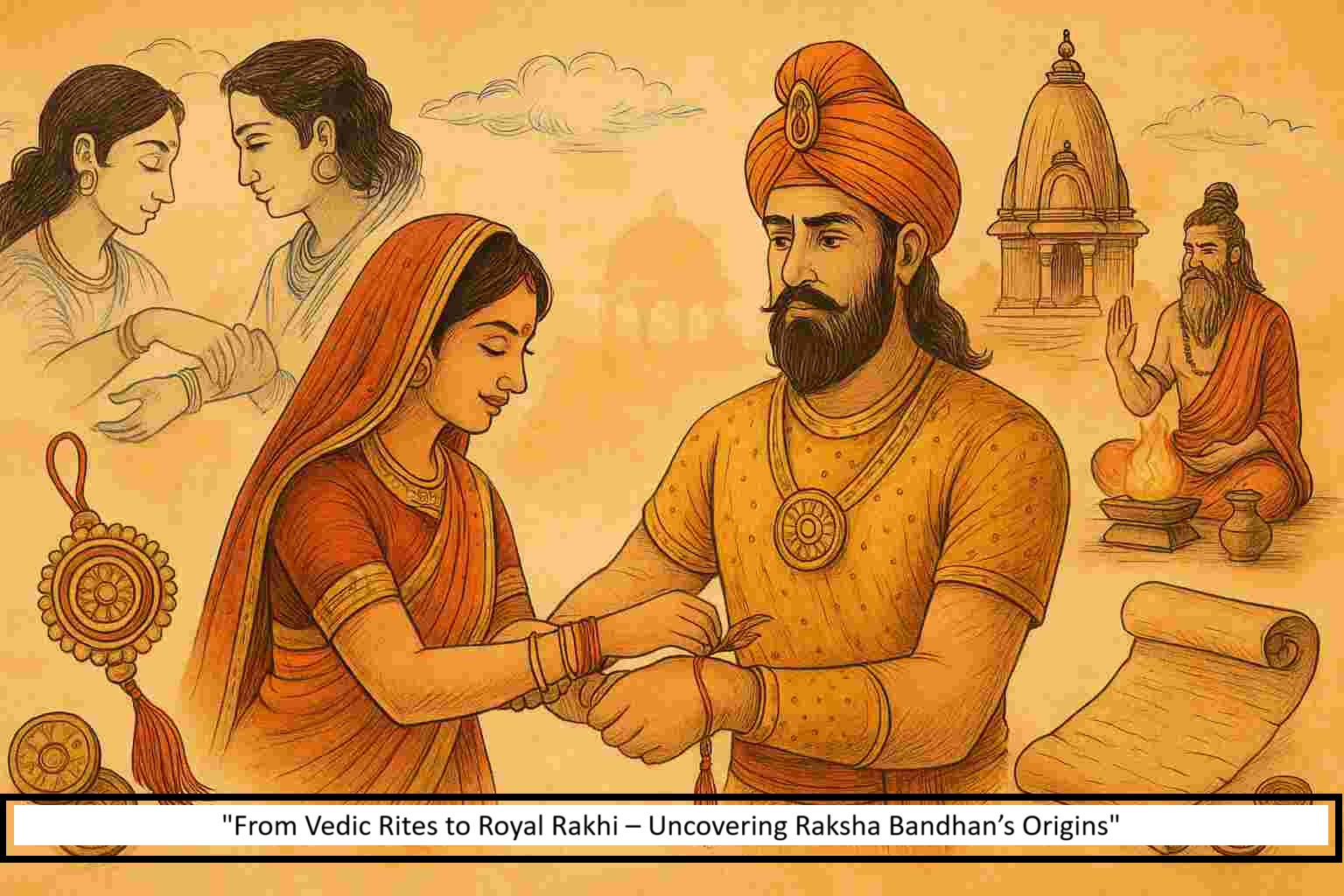Explore the lesser-known Raksha Bandhan customs and stories from ancient India — from kings and sages to warriors and regional rituals that time nearly erased.
🕉️ Introduction: Rakhi, A Festival Beyond Siblings
While modern Raksha Bandhan is often seen as a sweet sibling celebration, its roots run deep into Indian history, mythology, and royal traditions. Over centuries, many rituals and meanings were forgotten, replaced by the more familiar brother-sister bond.
Let’s rediscover the forgotten traditions of Raksha Bandhan — those that once shaped kingdoms, forged alliances, and protected warriors on battlefields.
🕰️ 1. Raksha Bandhan Among Royal Families
In ancient India, Raksha Bandhan wasn’t just about familial love — it was often used as a political and strategic alliance tool. Queens and princesses tied rakhis to kings of other regions to seek protection.
✍️ Notable Example:
Rani Karnavati of Mewar sent a Rakhi to Mughal Emperor Humayun, seeking help when her kingdom was under threat. Honoring the sacred bond, Humayun marched to defend her territory.
🔱 2. Raksha Bandhan in the Time of the Mahabharata
The origin story of Raksha Bandhan can be traced to the Mahabharata.
✍️ Mythical Moment:
Draupadi tied a strip of her saree on Lord Krishna’s bleeding wrist during battle. In return, Krishna vowed to protect her — a spiritual Raksha Sutra unlike the decorative ones we see today.
This ancient form of Raksha Bandhan was about emotional duty, spiritual vows, and divine bonds.
🔥 3. Raksha Bandhan & Yagyopavit Rituals
In the Vedic age, Raksha Bandhan was observed alongside the Upakarma Sanskar, where Brahmins would change their sacred thread (yagyopavit). A Raksha Sutra was tied to the wrist as a symbol of protection and spiritual renewal.
- Women would tie sacred threads to their husbands or sons for protection in upcoming journeys, wars, or pilgrimages.
- Rakhi was less decorative, more symbolic — often made of cotton threads blessed in rituals.
🪔 4. Rakhi as a Community Bond — Not Just Siblings
Before the commercialization of Rakhi, it was common for women to tie rakhi to neighbors, teachers, and even village guards — people they respected or wished well for.
Forgotten but Meaningful:
- Farmers’ wives would tie rakhis to the plough handle or cattle horns seeking a bountiful harvest
- In some tribal regions, girls tied rakhis to trees symbolizing protection of nature
This showed how Rakhi celebrated all protectors, not just brothers.
🏹 5. Raksha Bandhan & Soldiers in Ancient India
Warriors often tied charms and protective threads blessed by sages before heading into battle. These threads, known as “Raksha Kavach”, were meant to shield them from harm.
Resurfacing Today:
This tradition echoes today as many Indians tie Rakhis to:
- Indian Army personnel
- Police officers
- Doctors and frontline workers
A modern revival of an ancient warrior-centric tradition.
🪶 6. Forgotten Regional Rituals
Different regions in India had their own unique Raksha Bandhan traditions, now fading with time:
- Maharashtra: Women observed Nariyal Poornima, offering coconuts to the sea, and tied rakhis to coastal guardians (fishermen, protectors of trade routes).
- Odisha: People celebrated Gamha Purnima, where children tied rakhis to cows.
- Uttarakhand: Brahmins performed Janopunyu Sanskar, reciting ancient mantras and tying Raksha Sutra to all male family members.
🔍 Why These Traditions Faded
- Colonial reinterpretation of Indian rituals as only familial or sentimental
- Urban migration and nuclear families reduced community-driven observances
- Commercial focus on gifting overshadowed spiritual significance
But with increasing cultural curiosity, many are reclaiming these traditions and adding deeper meaning to Raksha Bandhan celebrations today.
📜 Conclusion: Reviving Rakhi with Ancient Wisdom
Raksha Bandhan is much more than tying a decorative thread. It is a symbol of sacred promises, a celebration of protectors, and a call to honor bonds that transcend bloodlines.
This year, take a moment to reflect on these ancient rakhi traditions — and maybe revive one of them in your own way.
Disclaimer: The traditions and stories mentioned in this article are based on a combination of mythological references, cultural practices, and historical anecdotes passed down through generations. While every effort has been made to present them respectfully and accurately, variations may exist across regions, communities, and interpretations. This article is intended to honor the cultural richness of Raksha Bandhan and is not meant to challenge or override anyone’s personal or religious beliefs.
Also Read : Raksha Bandhan Letter Templates (Handwritten Style) | Heartfelt Notes for Brothers & Sisters



